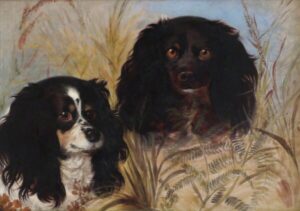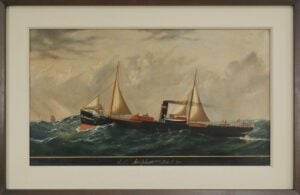Halswelle, Keeley (1832-1891)
Keeley Halswelle, A.R.S.A., was born at Richmond, Surrey of Scottish parents on 23 April 1832. After studying at the British Museum and Edinburgh, he embarked upon a career in book illustration in 1860, contributing to publications such as The Illustrated London News, (1860), Good Words, (1860), Pen and Pencil Pictures from the Poets, (1866) and Scott's Poems, c. (1866). While illustrating Robert Herrick's poems, he visited Edinburgh where he stayed, studying at the Royal Scottish Academy. In 1868 he moved to Rome for several years, also working in Paris. He was elected an Associate of the Royal Scottish Academy in 1866 and a member of the Royal Institute of Painters in Watercolour in 1882. He exhibited at the Royal Academy 1862-91 and the Royal Society of British Artists 1875-79. Possessed of considerable energy and versatility, his subjects ranged over a wide field, but in later years he devoted his attention almost entirely to landscape. He died in Paris, after a short illness, on 12th April 1891.



